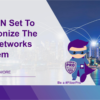5 Steps to Network Observability – A Checklist

To keep up with the complex, hybrid networks of today, organizations must have a comprehensive network observability platform that embraces wire data, enriched and enhanced flow, and cloud sources to ensure optimal application delivery to stakeholders.
That digital innovation requires a reliable and secure network foundation to deliver its promise – starting with basic observability.
What is Observability?
 True network observability is a lot more than just capturing wire data. Network observability means understanding the how and why of network performance in support of business goals, while delivering the right data as actionable metrics.
True network observability is a lot more than just capturing wire data. Network observability means understanding the how and why of network performance in support of business goals, while delivering the right data as actionable metrics.
These critical actionable metrics include:
- Wire data (packets)
- Metadata
- Enriched NetFlow analysis
The overall objective is always to efficiently deliver business services, solve performance and threat issues faster, and mitigate risk more effectively than ever.
During the buying stages, businesses should work closely with the vendor to size and specify the solution, considering both the current state of the network and where it needs to be in the next three years in order to ensure service delivery levels that support the organization and its needs.
- Future Proof – If the business has a strategy to grow through acquisition, for example, how many more users and applications will the network need to support? It doesn’t mean you have to buy everything on day one, but it does mean you need scalability built in from the outset.
- Understand the Architecture – How is the network architected? Do you have specific isolated segments that need close monitoring because they contain intellectual property or sensitive customer data? Or has the network grown organically and so the whole network needs monitoring using a single platform?
- Choose Critical Data Sources – What data sources are you planning on collecting and using? Packets, NetFlow, Active Directory, SNMP, log files, metadata, and more?
- Pinpoint Access – Where do you intend to deploy probes on your network? Do you need visibility into cloud hosted infrastructure and applications? Failure to deploy probes in the right place can result in “blind spots” in the network, and an incomplete picture can lead to inefficient troubleshooting and expensive mistakes.
- Baseline Activity – Do you know what normal network activity looks like? Do you have baselines and thresholds already mapped out? And do you update these thresholds when material changes occur?
By working through these five steps, a more complete picture of network observability needs emerges that can empower organizations to select the right solution to yield results.
Ready for the next step? Access the full 10-point checklist available as part of the Road to Observability eBook today.




